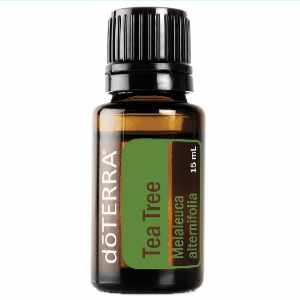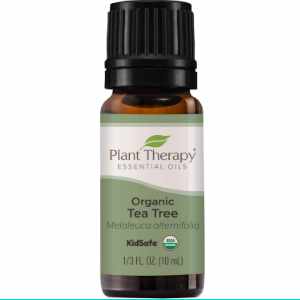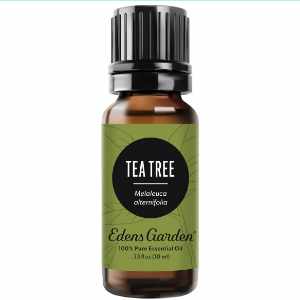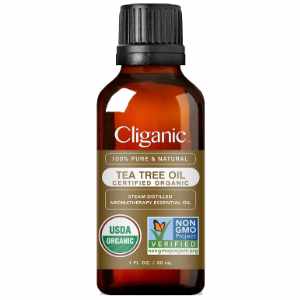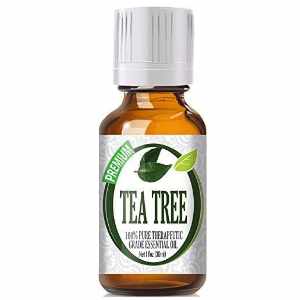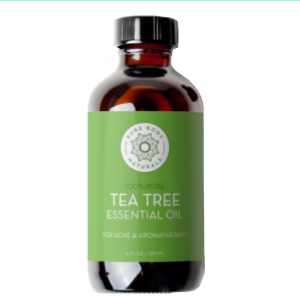
Say goodbye to fungal acne with the incredible power of tea tree oil! This natural remedy has become a go-to solution for many, thanks to its remarkable antifungal and antibacterial properties.
If you’re searching for the best tea tree oil to combat fungal acne, you’re in the right place. We’ve carefully curated a list of the top 7 options for you!
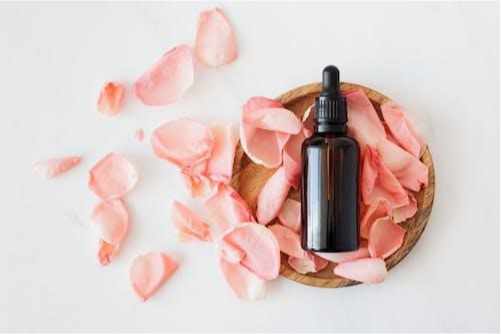
As one of the best OTC fungal acne treatments available, tea tree oil offers a natural and effective way to tackle fungal acne, a skin condition caused by an overgrowth of yeast on the skin.
With these fantastic tea tree oil products, you can say hello to clear, healthy skin and bid farewell to frustrating breakouts and fungal acne symptoms.
Top 7 Tea Tree Essential Oils For Fungal Acne
Let’s dive into the details of our top 7 picks and discover their pros and cons.
Disclosure: We may receive a tiny commission if you purchase through the links we provide. Thank you for considering our recommendations.
1. doTERRA Tea Tree Essential Oil
doTERRA is a well-known brand that offers high-quality essential oils, and their Melaleuca alternifolia (Tea Tree) Oil is no exception.
This powerful oil, is renowned for its antifungal properties that help control the growth of acne-causing fungi.
It is sourced from sustainable farms and undergoes rigorous testing to ensure purity and potency.
Its natural cleansing and purifying properties also help to soothe and heal irritated skin.
Plus, its refreshing and invigorating aroma will leave you feeling rejuvenated and energized.
Pros:
- Potent anti-fungal properties for fighting Malassezia (Pityrosporum) Folliculitis / Fungal Acne
- Natural cleansing and purifying properties for healthier skin
- Soothes and heals irritated skin
- Refreshing and invigorating aroma
Cons:
- Some may find the green and fresh scent a bit strong
Moreover, you should also read our previous article about itchy acne and what it could mean.
2. MAJESTIC PURE Tea Tree Oil
This powerful oil has a range of benefits for the skin, including treating fungal acne and other skin issues. It has a refreshing and invigorating scent that can uplift the senses.
Whether you are dealing with mild or severe acne, this multipurpose oil can help soothe, cleanse, and purify your skin without any harsh chemicals or artificial ingredients.
Additionally, it is steam distilled to ensure its purity and potency and comes in a dark amber bottle to protect it from UV rays, which can degrade the oil’s quality.
Pros:
- Natural cleansing and purifying properties for healthier skin
- Multipurpose oil that can be used for a variety of skin conditions
- Refreshing and invigorating aroma
Cons:
- May cause dryness or flaking if used too often or in large, undiluted amounts
3. Plant Therapy Organic Tea Tree Oil
Plant Therapy Organic Tea Tree Oil is certified organic and 100% pure.
It undergoes rigorous testing to ensure the highest quality and purity.
The oil is sourced from Australia and is known for its exceptional therapeutic properties.
Pros:
- Certified organic and 100% pure tea tree oil
- Powerful solution for treating fungal acne
- Undergoes rigorous testing to ensure the highest quality
- Comes with a built-in dropper for easy application
Cons:
- Very sensitive skin may experience a tingling sensation upon application
Read our previous article about expert tips for achieving clear, smooth, radiant skin with almond clear’s mandelic acid products.
4. Edens Garden Tea Tree Essential Oil
Edens Garden’s Tea Tree Essential Oil is 100% pure and undiluted, ensuring maximum potency. It is derived from the leaves of the tea tree through steam distillation.
The oil comes in a dark amber glass bottle, which helps preserve its quality and effectiveness.
This oil’s refreshing and invigorating aroma makes it a pleasant choice for skincare routines. It can be used not only to treat fungal acne and acne but also for other types of fungus-related skin and nail conditions.
Pros:
- Powerful solution for treating fungal acne
- 100% pure and undiluted tea tree oil
- Dark amber glass bottle preserves and maximizes potency
- Treats skin and nail fungal infections such as acne and toenail fungus
Cons:
- Some users may find the scent too strong or overpowering
- It does not have a dropper, which can sometimes make it challenging to control the amount of oil used
5. Cliganic Organic Tea Tree Oil
Are you tired of dealing with fungal acne? It’s time to add Cliganic Organic Tea Tree Essential Oil to your skincare arsenal!
This 100% pure and organic oil is perfect for treating fungal acne and other fungus-related skin issues.
The easy-to-use dropper allows for precise application, and it’s cruelty-free and vegan, making it a great option for those who prioritize ethical and sustainable products.
Pros:
- 100% pure and organic tea tree oil
- 3rd Party Tested
- Comes with a dropper for easy application
- Cruelty-free and Vegan
- Suitable for all skin types
Cons:
- May feel greasy on the skin if used excessively
6. Healing Solutions Premium Tea Tree Oil
Healing Solutions Premium Tea Tree Oil is of premium quality and has a strong scent.
It comes in a large bottle, offering good value for money.
This versatile oil can be used for both skincare and haircare purposes.
It is backed by a 100% satisfaction guarantee, giving users confidence in its quality.
Pros:
- Premium quality tea tree oil with a strong scent
- It comes in a large bottle, offering good value for money
- It can be used for both skincare and hair care
- A 100% satisfaction guarantee backs it
- Child Resistant Cap
Cons:
- Strong herbaceous scent, might not suit everyone
We also wrote an article differentiating fungal acne and closed comedones: fungal acne vs. closed comedones.
7. Pure Body Naturals Tea Tree Essential Oil
Pure Body Naturals Tea Tree Essential Oil is a 100% pure product with no additives or fillers.
It comes in a dark amber bottle, which helps preserve its potency and effectiveness.
This oil suits all skin types and can be used for various skin issues, including fungal and bacterial acne.
Pros:
- 100% pure tea tree oil with no additives or fillers
- It comes in a dark amber bottle to preserve its potency
- Suitable for all skin types
- It can be used for various skin issues, including fungal infections
Cons:
- Application may cause a tingling or mild sensation on the skin, which may not suit everyone
The Best Way to Use Tea Tree Oil for Fungal Acne
As stated, this essential oil has become a popular choice for treating fungal acne-prone skin owing to the outstanding antifungal properties that enable it to inhibit yeast and fungus growth naturally.
When using tea tree oil for fungal acne, it is important to use it correctly to maximize its benefits and minimize potential side effects. Here are some tips for using tea tree oil for fungal acne:
1. Dilute the tea tree oil
Tea tree oil is very potent and, in most cases, should never be used undiluted on the skin. You can dilute the oil by mixing a few drops of it with a carrier oil such as our favorite purified MCT Oil.
Using this method will significantly decrease the chances of experiencing skin irritation while treating fungal acne without compromising the oil’s powerful antifungal abilities.
2. Apply the oil to affected areas
After diluting tea tree oil, apply it directly to the affected areas of the skin. You can use a cotton swab or your fingertips to apply the oil. Be sure to avoid the eye area and any open wounds.
3. Leave the oil on for a few hours
After applying the oil, leave it on your skin for a few hours before washing it off. This will give the tea tree oil enough time to penetrate the skin and kill the fungal acne cells.
4. Use it regularly
To see the best results, use tea tree oil regularly for at least a few weeks. You can apply it once a day or every other day, depending on your skin’s sensitivity.
5. Use it at night:
Preferably before bed. This will allow the oil to penetrate the skin and work its magic while you sleep. Be sure to avoid sun exposure for at least 12 hours after applying tea tree oil, as it can make your skin more sensitive to the sun.
Important!
There are multiple reports online about people using tea tree essential oil directly on their skin without experiencing any negative side effects. However, it is important to keep in mind that using this oil in such a manner is done at your own risk. The effectiveness and safety of tea tree essential oil may vary depending on the individual, so your experience with it may be different from others.
Avoid using carrier oils like coconut oil and olive oil, as these can exacerbate fungal acne.
Remember to always patch-test the oil on a small area of your skin before using it on larger areas to ensure that you are not allergic to it. Additionally, if you experience any skin irritation, redness, itching, or discomfort, discontinue use immediately.
Additional Things to Consider When Using Tea Tree Oil for Fungal Acne
It is worth noting that fungal acne is caused by a yeast infection and necessitates a different treatment than acne vulgaris (regular acne), which is caused by oily skin and bacteria. Consequently, tea tree oil serves as a comprehensive remedy for all forms of acne.
One very distinctive advantage of using tea tree oil is its dual antimicrobial properties, which allow it to effectively combat both common acne and fungal acne simultaneously.
Additionally, using an over-the-counter anti-dandruff shampoo with ketoconazole combined with tea tree oil can enhance the effectiveness of anti dandruff shampoos as a topical treatment for Malassezia-related skin diseases. This same combination can also be used for body washes or your favorite face wash.
Lastly, if you have doubts about your skin condition, it is advisable to consult a dermatologist prior to using any fungal acne treatment. Dermatologists possess expertise in recognizing fungal acne and abnormal yeast growth, including those situated deep within the skin’s hair follicles.
Upon diagnosis, they may suggest a course of prescription oral medication as the primary treatment option, among other options available to effectively treat fungal acne.
Conclusion
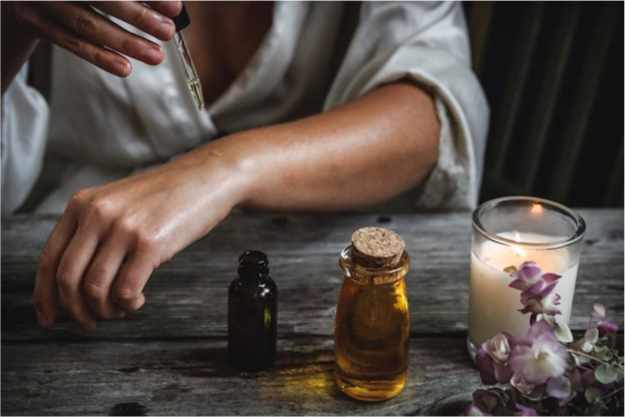
When it comes to choosing the best tea tree oil for fungal acne, it ultimately depends on your personal preferences and needs.
However, among the top 7 options listed above, dōTERRA Tea Tree Oil stands out for its purity and potency.
At the same time, MAJESTIC PURE Tea Tree Oil offers a convenient dropper for easy application.
Always dilute tea tree oil with an appropriate carrier oil before applying it to your skin, and perform a patch test to check for allergies or sensitivities.
Regularly used tea tree oil can be an effective and natural solution to combat fungal acne and promote healthier skin.
Read our previous article about expert tips for achieving clear, smooth, radiant skin with almond clear’s mandelic acid products.
-
Wróblewska, M., Szymańska, E., & Winnicka, K. (2021). The Influence of Tea Tree Oil on Antifungal Activity and Pharmaceutical Characteristics of Pluronic® F-127 Gel Formulations with Ketoconazole. International Journal of Molecular Sciences, 22(21). https://doi.org/10.3390/ijms222111326
-
Weseler A, Geiss HK, Saller R, Reichling J. Antifungal effect of Australian tea tree oil on Malassezia pachydermatis isolated from canines suffering from cutaneous skin disease. Schweiz Arch Tierheilkd. 2002 May;144(5):215-21. doi: 10.1024/0036-7281.144.5.215. PMID: 12070905.
- Hammer KA, Carson CF, Riley TV. In vitro susceptibility of Malassezia furfur to the essential oil of Melaleuca alternifolia. J Med Vet Mycol. 1997 Sep-Oct;35(5):375-7. PMID: 9402533.
- Satchell AC, Saurajen A, Bell C, Barnetson RS. Treatment of dandruff with 5% tea tree oil shampoo. J Am Acad Dermatol. 2002 Dec;47(6):852-5. doi: 10.1067/mjd.2002.122734. PMID: 12451368.
More Content
- The Best Fungal Acne Shampoo for Healthy Scalp and Shiny Hair
- The Truth About Retinol and its Effectiveness in Treating Fungal Acne
- Unlocking the Power of Sulfur for Fungal Acne
- Skin Care Routine for Fungal Acne
- Does Niacinamide Help with Fungal Acne?
- Fungal Acne Safe Products You Can Add To Your Skin Routine
- 18 SunScreens for Fungal Acne
- Fungal Acne-Safe Toners Your Skin Will Love
- The Best Products for Fungal Acne
- Malezia Skincare: A Game-changer for Fungal Acne
- Fungal Acne Safe Foundation Makeup
- Best Antifungal Creams for Face
- What is Fungal Acne
- Top-Rated Benzoyl Peroxide Face Wash for Acne
- DIY Fungal Acne Treatment at Home: Natural Solutions That Work

